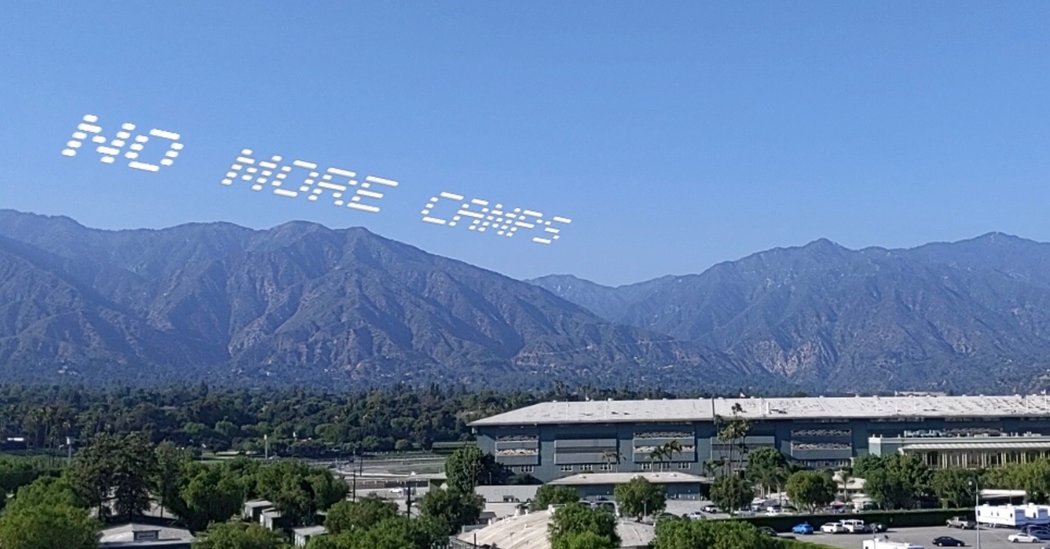CASSILS The urgency of “In Plain Sight” has become paramount as people began to die from Covid-19 in detention camps. We had initially planned for this project to occur without any press, but when the pandemic hit, we launched our Instagram page that features short interviews with our artists and calls to action. It’s been a great opportunity to take action. In recent months, I’ve had 11 exhibitions canceled or paused. Almost every artist I know has, too.
There is a rich history of artists looking toward the sky for inspiration. Yves Klein used it as inspiration for his conceptual blue paintings. Recently, the artist Jammie Holmes flew George Floyd’s final words above five cities across the country. What other works have inspired your skytyping project?–
ESPARZA “Repellent Fence” (2015) by the art collective Postcommodity was particularly important for us. They created a metaphorical suture along the migration path between the United States and Mexico with tethered balloons to speak about land art in relation to permanence and shifting landscapes. In the same way that they used the land to talk about the divisive power of colonial structures, we are hoping to index the sky as a symbol of inspiration and hope. And the sky is able to migrate messages across borders. When our message is skytyped above San Diego, the words will likely drift into Tijuana. And when our words are written above Los Angeles, they will have a shared orbital path, allowing phrases like “Abolition Now” and “Stop Crimigration Now” to coalesce into a circular message.
CASSILS We are also thinking of artists who have used the language of advertisement to get their points across. Artists like Lynda Benglis and Barbara Hammer. The AIDS Memorial Quilt was another important reference because it demonstrates how people can come together through a patchwork of activism.
Many artists involved with the project are also queer, which may or may not be a coincidence. We are thinking about the words of José Esteban Muñoz, who wrote in 2009 that “queerness exists for us as an ideality that can be distilled from the past and used to imagine a future.” We see a liberation for queer, migrant and Black communities as deeply bound together because they are all rooted in the issues of white supremacy and colonization. Our jobs as queer artists is to imagine the future.
ESPARZA And we are putting the proposal of care, which is central to many queer communities, at the forefront of this project. We want to imagine what care looks like for people who are impacted by migrant detention and Covid-19.
CASSILS Bringing the skytypers into the fold has also been a unique experience. And with some messages being written in Cree, Farsi and Urdu, this will likely be the first time many people will see their own languages in the sky. There has also been a challenge to imagine how to write languages in the sky that don’t use the Roman alphabet. Skytypers usually work in fleets of five planes each, so any image or letter must exist along a five-point matrix. For artists on the project, that means experimenting with the grid and drawing out words like “freedom” in Farsi or Urdu. It’s interesting to note the challenges of what we can put into the sky, and how we might overcome those barriers.
Source: Protesting U.S. Immigration Policies, Artists Aim for the Sky


